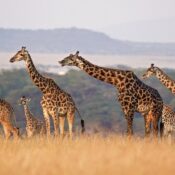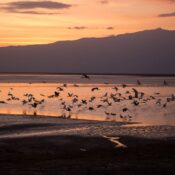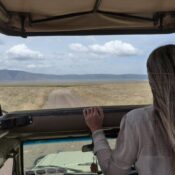Top 10 Most Visited National Parks in Tanzania: Ultimate Safari Guide 2025
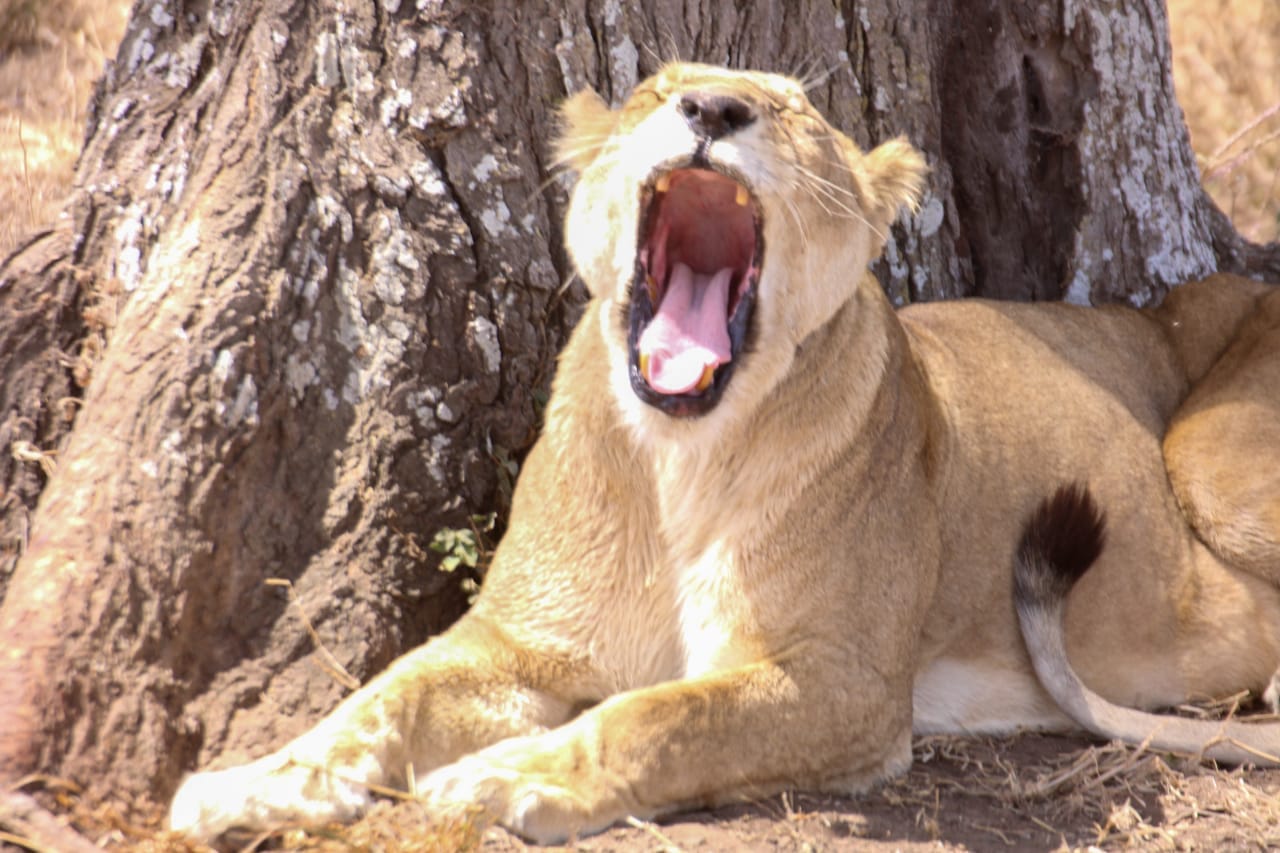
Top 10 Most Visited National Parks in Tanzania: Ultimate Safari Guide 2025
Tanzania stands as Africa’s premier safari destination, boasting an incredible collection of national parks that attract millions of visitors annually seeking authentic wildlife experiences and breathtaking natural beauty. The top 10 most visited national parks in Tanzania showcase the country’s remarkable biodiversity, from the legendary Serengeti plains where the Great Migration unfolds to the pristine wilderness of remote southern parks that offer exclusive safari adventures.
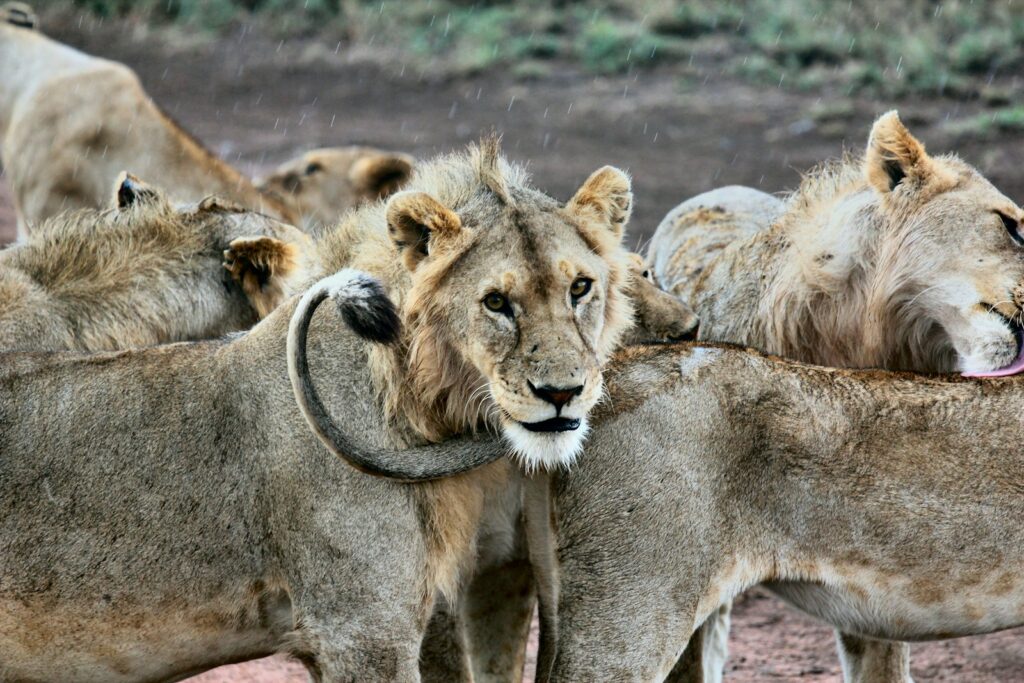
Understanding the top 10 most visited national parks in Tanzania helps safari enthusiasts plan optimal itineraries that maximize wildlife viewing opportunities while experiencing the diverse ecosystems that make Tanzania a world-renowned conservation success story. Each park offers unique attractions, seasonal highlights, and distinct characteristics that cater to different safari preferences and travel styles.
Table of Contents
The popularity rankings of Tanzania’s national parks reflect both accessibility and exceptional wildlife experiences, with the most visited parks combining outstanding game viewing opportunities with reliable infrastructure that supports diverse accommodation options and safari activities. These top 10 most visited national parks in Tanzania represent the pinnacle of African safari destinations and continue attracting increasing numbers of international visitors each year.
Safari Stride’s extensive experience in Tanzania’s national parks ensures our clients experience the best each destination offers while understanding the unique characteristics that make certain parks more popular than others. Our expertise helps travelers choose optimal park combinations that provide comprehensive wildlife experiences while managing time, budget, and logistical considerations effectively.
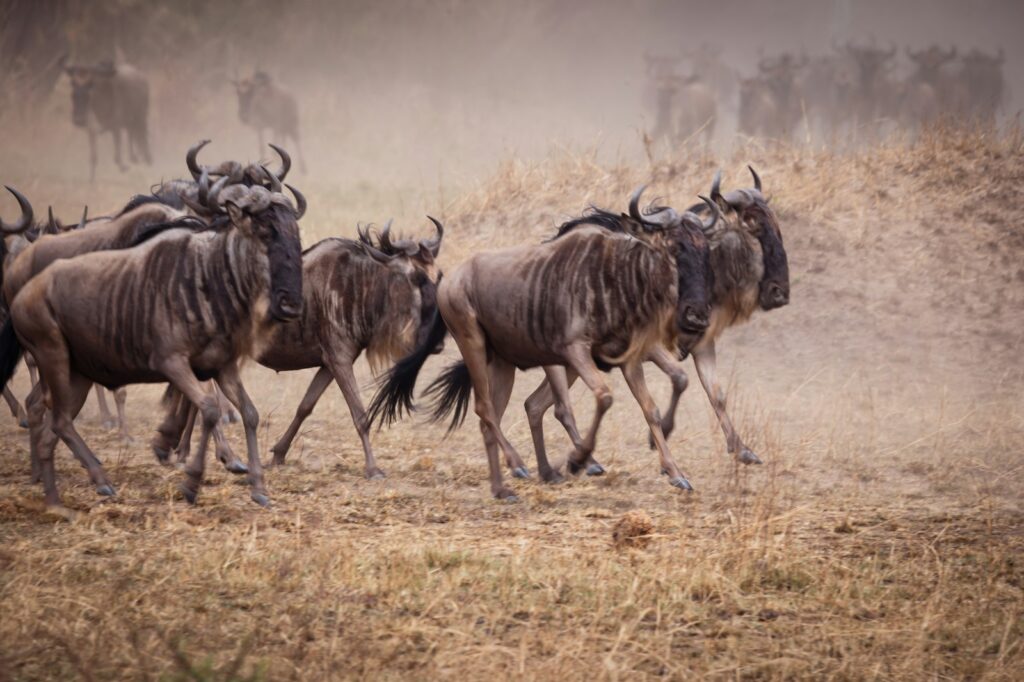
1. Serengeti National Park – The Crown Jewel
Serengeti National Park consistently ranks as the most visited national park in Tanzania and arguably the most famous safari destination in the world. This UNESCO World Heritage Site covers approximately 14,750 square kilometers of pristine African savanna and supports the largest terrestrial wildlife migration on Earth, making it an essential destination for any serious safari enthusiast.
The Great Migration represents Serengeti’s most famous attraction, with over two million wildebeest, zebras, and gazelles continuously moving across the park’s vast plains in search of fresh grazing and water. This natural phenomenon creates year-round wildlife spectacles that vary dramatically by season, from the dramatic river crossings at the Mara River to the incredible calving season in the southern plains.
Serengeti’s diverse ecosystems support exceptional wildlife populations beyond the migration herds, including large prides of lions, significant leopard populations, and healthy numbers of elephants, buffalo, and numerous antelope species. The park’s varied landscapes, from endless grasslands to rocky kopjes and riverine forests, provide diverse habitats that ensure excellent wildlife viewing throughout the year.
The park’s accessibility through multiple airstrips and well-developed road networks makes it easily reachable for safari travelers, while an extensive range of accommodation options from luxury lodges to mobile camps caters to all budgets and preferences. This combination of world-class wildlife experiences and excellent infrastructure explains why Serengeti remains Tanzania’s most visited national park.
Seasonal variations in Serengeti create different wildlife viewing opportunities throughout the year, with the dry season offering concentrated game viewing around permanent water sources while the wet season showcases lush landscapes and incredible birdlife diversity. Understanding these seasonal patterns helps visitors choose optimal timing for their Serengeti safari experience.
The park’s size allows for diverse safari experiences, from the famous central Seronera area with its year-round wildlife populations to the remote western corridor where dramatic river crossings occur, and the pristine northern region that offers exclusive wildlife viewing with fewer crowds during certain seasons.
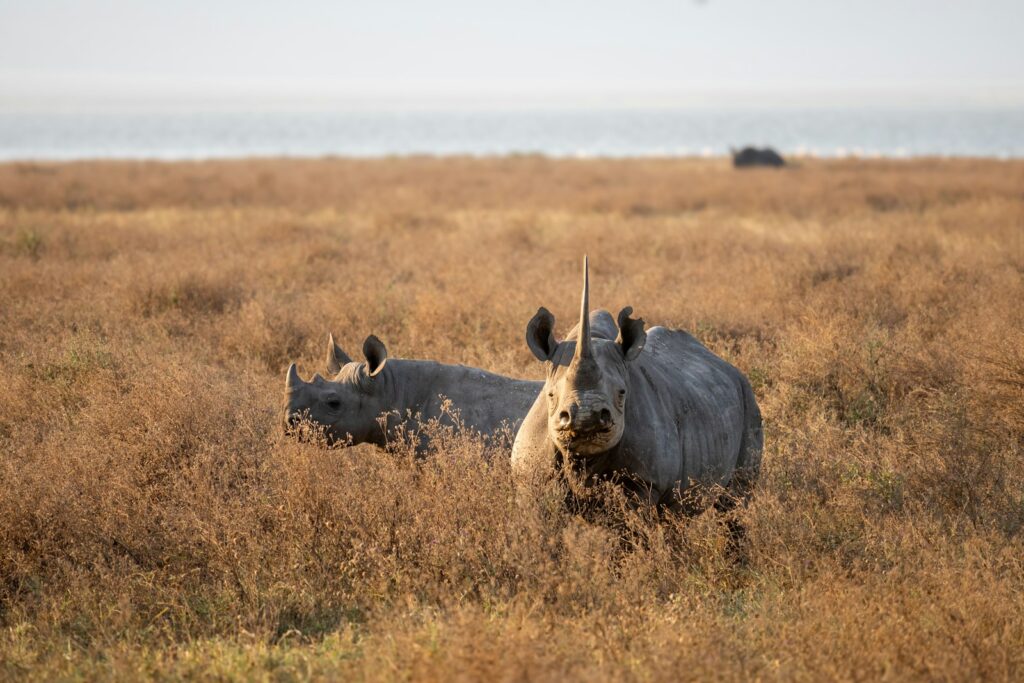
2. Ngorongoro Conservation Area – The Garden of Eden
Ngorongoro Conservation Area ranks as Tanzania’s second most visited destination, famous for the spectacular Ngorongoro Crater, often called the “Eighth Wonder of the World.” This unique geological formation creates a natural amphitheater that supports one of Africa’s highest concentrations of wildlife within a relatively small area.
The Ngorongoro Crater measures approximately 20 kilometers in diameter and 600 meters deep, creating a self-contained ecosystem that supports over 25,000 large mammals including the Big Five. The crater floor’s permanent water sources and nutrient-rich grasslands maintain exceptional wildlife densities year-round, making it one of the most reliable destinations for spectacular game viewing.
Black rhinoceros populations in Ngorongoro represent one of Tanzania’s most significant conservation successes, with the crater supporting a stable population of these critically endangered animals. Visitors to Ngorongoro enjoy excellent opportunities to observe rhinos alongside lions, elephants, buffalo, and leopards within this compact but incredibly rich ecosystem.
The conservation area’s unique multiple land use model allows Maasai pastoralists to continue traditional grazing practices alongside wildlife conservation, creating authentic cultural experiences that complement exceptional wildlife viewing. This integration of conservation and traditional lifestyles makes Ngorongoro a model for sustainable conservation practices.
Beyond the famous crater, Ngorongoro Conservation Area encompasses diverse landscapes including the Olduvai Gorge, significant archaeological sites, and highland forests that support different wildlife communities and provide additional exploration opportunities for visitors seeking comprehensive East African experiences.
Accommodation options around Ngorongoro range from luxury lodges perched on the crater rim with spectacular views to more modest facilities that provide comfortable access to this incredible destination. The area’s popularity requires advance booking, particularly during peak seasons when demand exceeds available accommodation capacity.
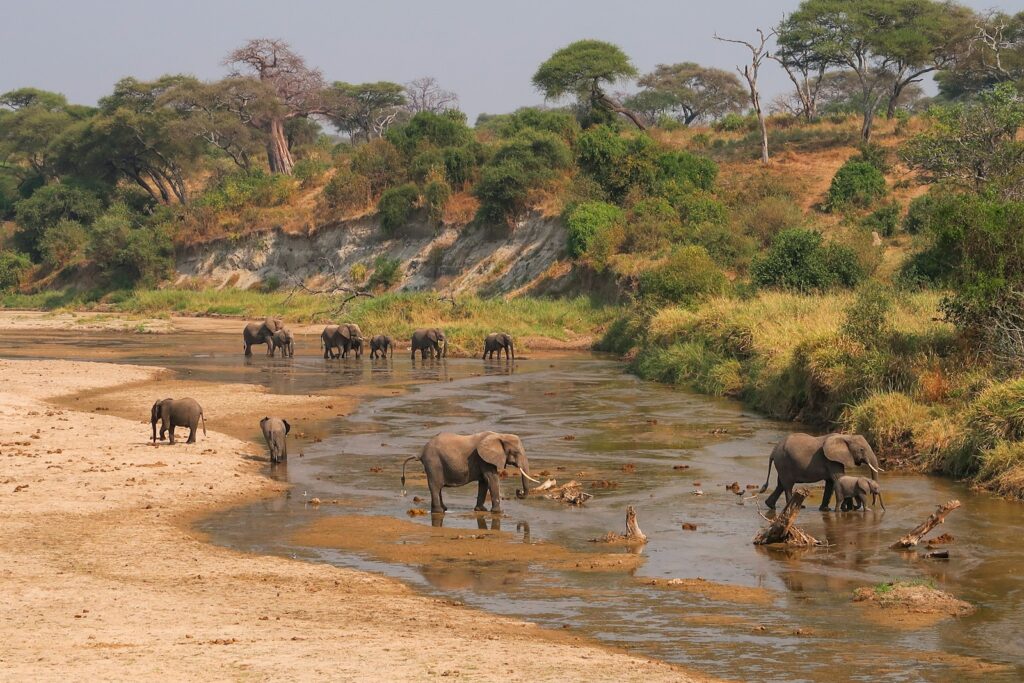
3. Tarangire National Park – Land of Giants
Tarangire National Park ranks among Tanzania’s most visited destinations due to its exceptional elephant populations and iconic baobab trees that create some of Africa’s most photogenic safari landscapes. During the dry season, Tarangire supports one of the highest concentrations of elephants in Africa, with hundreds of these magnificent creatures congregating along the Tarangire River.
The park’s diverse ecosystems support over 300 bird species, making it an excellent destination for birdwatchers seeking to combine exceptional wildlife viewing with outstanding avian diversity. The varied habitats, from riverine forests to acacia woodlands and seasonal swamps, create opportunities to observe species rarely seen in other northern circuit parks.
Tarangire’s seasonal wildlife patterns create dramatically different experiences depending on visit timing, with the dry season bringing massive elephant herds and concentrated game viewing while the wet season sees animals dispersing across wider areas with lush landscapes and excellent bird activity creating different but equally rewarding experiences.
The park’s baobab trees, some over 1,000 years old, create distinctive landscapes that provide shade for wildlife and spectacular photographic opportunities. These ancient giants have become synonymous with Tarangire’s identity and feature prominently in countless safari photographs and travel marketing materials.
Predator populations in Tarangire include healthy numbers of lions, leopards, and spotted hyenas that take advantage of concentrated prey populations during the dry season. The park’s tree-climbing lions, while less famous than those in Lake Manyara, provide excellent opportunities for observing this unusual behavior.
Accommodation options in and around Tarangire range from luxury safari lodges to comfortable tented camps that provide easy access to the park’s diverse wildlife viewing opportunities. The park’s proximity to Arusha and other northern circuit destinations makes it an ideal component of comprehensive northern Tanzania safari itineraries.
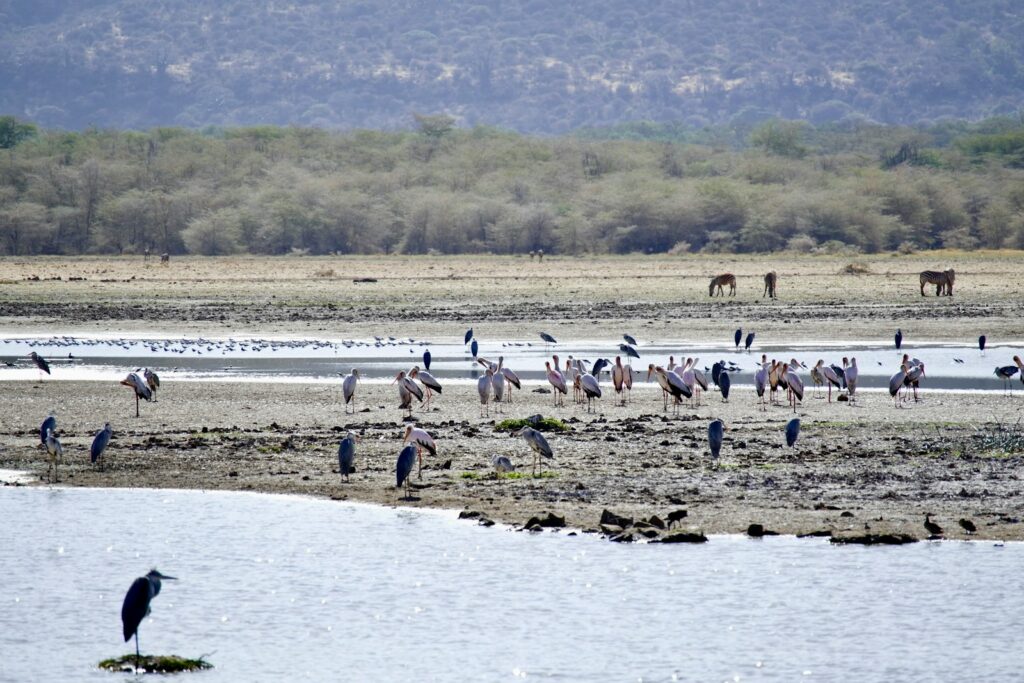
4. Lake Manyara National Park – Compact Wonder
Lake Manyara National Park, despite its relatively small size, ranks among Tanzania’s most visited parks due to its incredible diversity of ecosystems packed into a compact area that can be thoroughly explored in a single day. This accessibility and diversity make it an ideal addition to northern circuit safaris and a favorite among first-time Africa visitors.
The park’s famous tree-climbing lions represent one of its most unique attractions, with several prides having developed the unusual behavior of resting in acacia trees during hot afternoons. While not guaranteed on every visit, sightings of these remarkable cats create unforgettable memories and exceptional photographic opportunities.
Lake Manyara itself supports massive flocks of flamingos and other water birds, creating spectacular scenes when conditions are favorable for large congregations. The alkaline lake’s water levels fluctuate seasonally, affecting bird populations and creating different wildlife viewing opportunities throughout the year.
The park’s diverse habitats, compressed into approximately 330 square kilometers, include groundwater forests, acacia woodlands, grasslands, and the alkaline lake itself. This habitat diversity supports an impressive variety of wildlife species and creates constantly changing scenery during game drives.
Elephant populations in Lake Manyara are notable for their adaptation to the park’s varied terrain, with herds moving between different habitat zones throughout the day. The park’s elephants often display interesting behaviors related to their diverse environment, including innovative feeding strategies and social interactions.
The park’s location along the Great Rift Valley escarpment creates stunning scenic backdrops for wildlife photography while providing diverse topographical features that support different wildlife communities. The combination of dramatic landscapes and excellent wildlife viewing in a compact area explains Lake Manyara’s popularity among safari travelers.
Cultural experiences around Lake Manyara include visits to local Maasai communities and traditional markets that provide insights into rural Tanzanian life while complementing wildlife experiences with authentic cultural interactions.
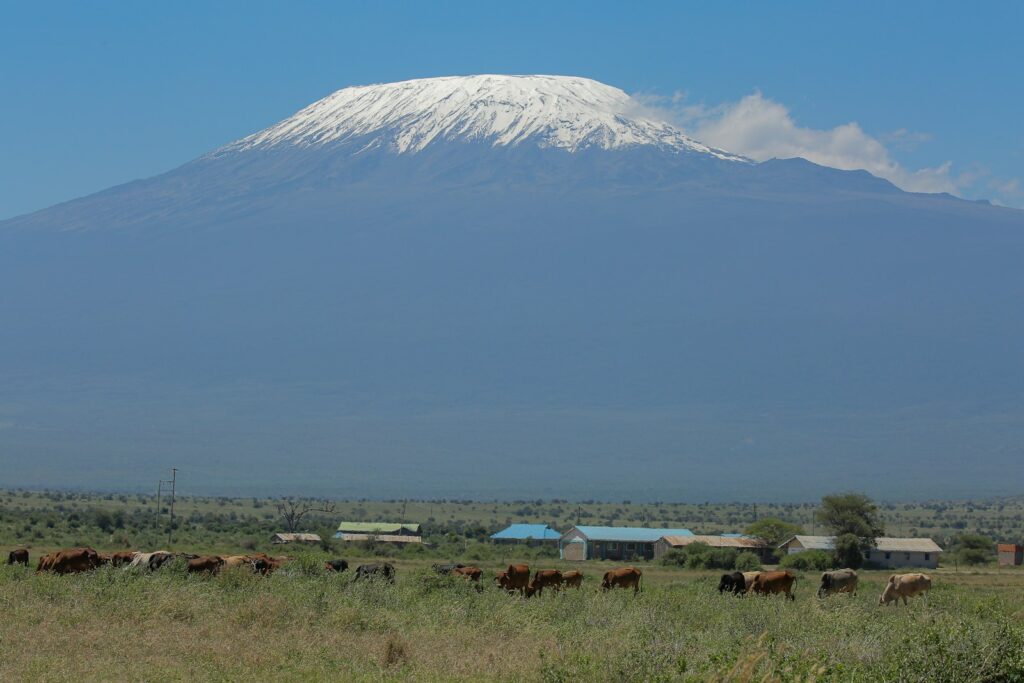
5. Kilimanjaro National Park – Roof of Africa
Kilimanjaro National Park attracts thousands of climbers annually seeking to reach the summit of Africa’s highest peak, making it one of Tanzania’s most visited destinations despite its focus on mountain climbing rather than traditional game viewing. Mount Kilimanjaro’s iconic snow-capped summit and diverse ecological zones create unique wilderness experiences unavailable elsewhere in Tanzania.
The mountain’s multiple climate zones, from tropical forests at lower elevations to alpine desert and glacial conditions near the summit, support diverse plant and animal communities that change dramatically with altitude. This ecological diversity provides trekkers with constantly changing environments during their ascent to Uhuru Peak.
Wildlife populations in Kilimanjaro National Park include elephants, buffalo, leopards, and numerous smaller species that inhabit the mountain’s forest zones, though wildlife viewing opportunities are limited compared to traditional safari parks. The primary attraction remains the challenge and achievement of reaching Africa’s highest point.
Multiple climbing routes provide different experiences and success rates, from the popular Marangu route with its hut accommodation to the more challenging Machame and Lemosho routes that offer superior acclimatization profiles and more diverse scenery. Route selection significantly impacts the overall Kilimanjaro experience and success likelihood.
The park’s popularity creates crowding issues during peak climbing seasons, with hundreds of climbers attempting the summit simultaneously during favorable weather windows. This popularity requires advance booking and careful timing to optimize climbing experiences while managing crowd-related challenges.
Cultural experiences around Kilimanjaro include interactions with local Chagga communities who have lived on the mountain’s slopes for generations, developing sophisticated agricultural systems and traditional knowledge of mountain ecology that enrich the overall Kilimanjaro experience.
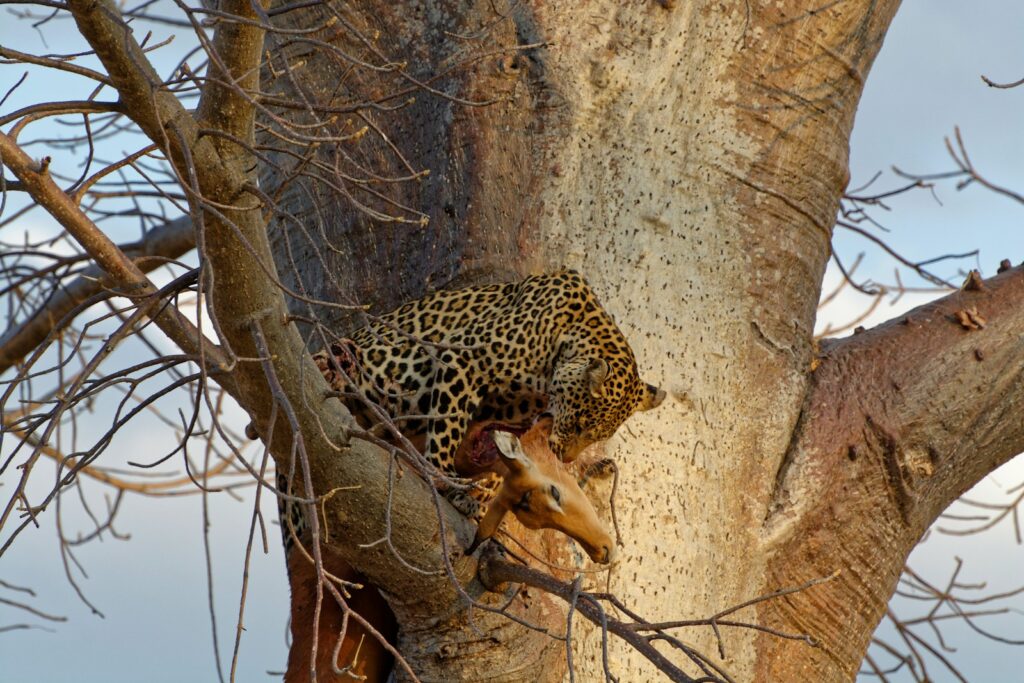
6. Ruaha National Park – Tanzania’s Wild Heart
Ruaha National Park, Tanzania’s largest national park, attracts increasing numbers of visitors seeking authentic wilderness experiences away from the crowds of more famous northern circuit destinations. This vast wilderness area offers exceptional wildlife viewing opportunities in pristine settings that feel truly wild and untouched.
The park’s massive elephant populations, estimated at over 15,000 individuals, create some of Africa’s most spectacular elephant viewing opportunities, particularly during the dry season when large herds congregate along the Great Ruaha River. These elephant concentrations rival those of more famous destinations while offering more exclusive viewing experiences.
Predator populations in Ruaha reach exceptional densities, with the park supporting large prides of lions, significant leopard populations, and some of Tanzania’s most viable wild dog packs. The park’s vast wilderness areas provide ideal habitat for these wide-ranging predators while offering visitors incredible opportunities for predator viewing and photography.
The park’s remote location and challenging wet season accessibility mean that visitor numbers remain relatively low compared to northern circuit parks, creating opportunities for exclusive wildlife experiences and intimate encounters with African wilderness that are increasingly rare in more developed safari destinations.
Seasonal wildlife patterns in Ruaha create dramatically different experiences, with dry season visits offering concentrated game viewing around permanent water sources while wet season visits showcase lush landscapes and dispersed wildlife populations that require different safari strategies and expectations.
Accommodation options in Ruaha focus on authentic safari experiences rather than luxury amenities, with most camps and lodges emphasizing connection with wilderness environments while maintaining comfort and safety standards appropriate for this remote destination.
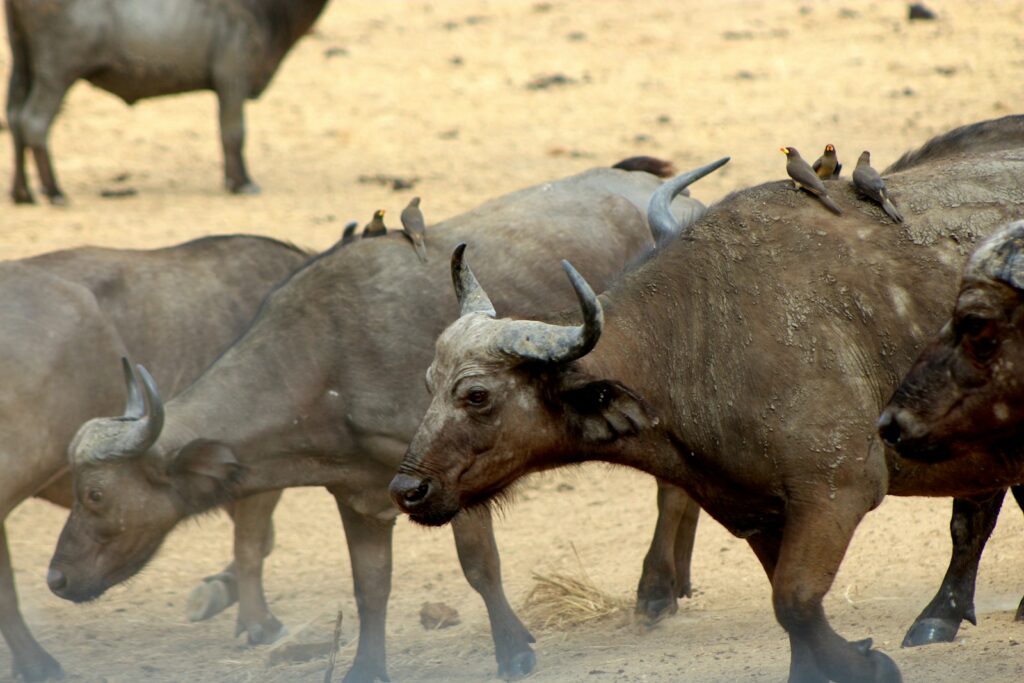
7. Mikumi National Park – Accessible Wilderness
Mikumi National Park’s accessibility from Dar es Salaam and location along major transportation routes make it one of Tanzania’s most visited parks, particularly popular among domestic tourists and international visitors with limited time for extensive safari travel. The park’s proximity to Tanzania’s largest city creates opportunities for weekend safaris and shorter wildlife experiences.
The park’s open grasslands and acacia woodlands support diverse wildlife populations including elephants, lions, leopards, buffalo, and numerous antelope species that create excellent game viewing opportunities within relatively small areas. The park’s compact size allows for comprehensive wildlife experiences during short visits.
Mikumi’s wildlife concentrations along the seasonal Mkata River create predictable game viewing opportunities during dry season months, with permanent water sources attracting large numbers of animals and creating natural wildlife amphitheaters for observation and photography.
The park serves as an important component of the larger Selous-Mikumi ecosystem, with wildlife movements between these areas creating seasonal variations in animal populations and behavior patterns that affect optimal timing for visits and wildlife viewing strategies.
Budget-conscious travelers often choose Mikumi as an alternative to more expensive northern circuit parks, finding excellent wildlife experiences at more affordable prices while still enjoying authentic African safari adventures in pristine wilderness settings.
The park’s development as a popular destination has created infrastructure improvements including better roads, accommodation options, and guide services that enhance visitor experiences while maintaining the authentic character that makes Mikumi appealing to wildlife enthusiasts.
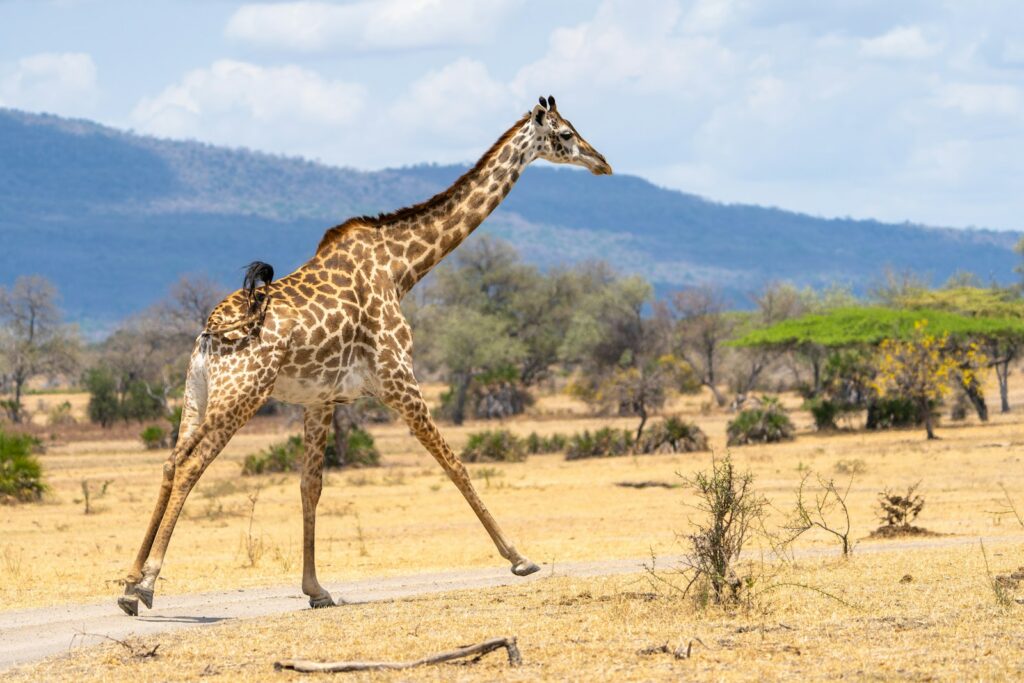
8. Nyerere National Park (Selous Game Reserve) – Wilderness Giant
Nyerere National Park, formerly part of the Selous Game Reserve, represents one of Africa’s largest protected areas and attracts visitors seeking vast wilderness experiences combined with unique boat safari opportunities along the Rufiji River system. This massive protected area offers diverse safari activities unavailable in other Tanzanian destinations.
The park’s boat safaris provide unique perspectives on African wildlife, with opportunities to observe hippos, crocodiles, elephants, and numerous bird species from the water while experiencing different viewpoints and photographic opportunities compared to traditional land-based game drives.
Walking safaris in Nyerere offer authentic bush experiences that connect visitors directly with African wilderness environments while providing insights into ecosystem function, animal behavior, and survival skills that enhance appreciation for African conservation challenges and successes.
The park’s diverse ecosystems, from riverine forests to miombo woodlands and seasonal floodplains, support exceptional biodiversity including significant populations of endangered species like African wild dogs and black rhinoceros that make wildlife viewing particularly meaningful for conservation-minded travelers.
Remote fly-camping opportunities in Nyerere allow adventurous visitors to experience African wilderness authenticity that has become increasingly rare in more developed safari destinations, with temporary camps providing ultimate immersion in pristine natural environments.
The park’s size creates opportunities for multi-day expeditions that explore different ecosystem zones while providing cumulative wildlife experiences that build throughout extended visits, making Nyerere ideal for serious safari enthusiasts seeking comprehensive African wilderness experiences.
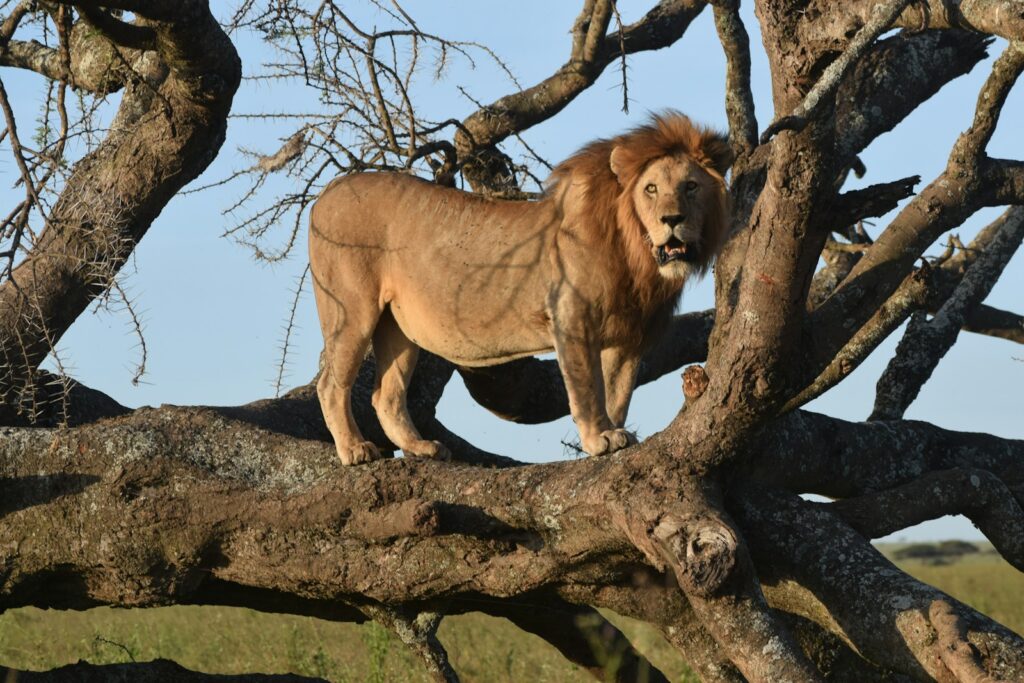
9. Katavi National Park – Remote Paradise
Katavi National Park represents one of Tanzania’s most remote and least visited major parks, though it attracts dedicated wildlife enthusiasts seeking exclusive experiences in pristine wilderness settings far from tourist crowds. The park’s inaccessibility during wet seasons limits visitor numbers while preserving authentic wilderness character.
Seasonal floodplains in Katavi create temporary lakes that attract massive wildlife concentrations during dry season months, with thousands of buffalo, elephants, and other species congregating in relatively small areas that create some of Africa’s most spectacular wildlife viewing opportunities.
Hippo populations in Katavi’s seasonal pools reach incredible densities, with hundreds of individuals packed into shrinking water sources that create intense competition and dramatic behavioral displays rarely witnessed elsewhere. These hippo concentrations represent one of Africa’s most impressive wildlife spectacles.
The park’s pristine wilderness character allows for natural wildlife behaviors and movements that have been disrupted in more developed destinations, providing visitors with opportunities to witness authentic African wilderness dynamics and ecosystem function in unmodified environments.
Predator populations in Katavi benefit from abundant prey concentrations during dry seasons, creating opportunities for observing hunting behaviors, territorial interactions, and social dynamics that demonstrate the complexity of African predator-prey relationships in natural settings.
Accommodation options in Katavi emphasize authentic wilderness experiences over luxury amenities, with most facilities operating seasonally and focusing on providing comfortable access to exceptional wildlife viewing rather than resort-style accommodations.
10. Mahale Mountains National Park – Chimpanzee Haven
Mahale Mountains National Park, while specialized in its primary attraction, draws dedicated visitors seeking encounters with wild chimpanzees in one of their last remaining strongholds. This unique park combines primate experiences with spectacular Lake Tanganyika settings that create unforgettable African wilderness memories.
Chimpanzee tracking in Mahale represents one of Africa’s premier wildlife experiences, with habituated chimpanzee groups providing opportunities for close observations of these remarkable primates in their natural forest habitat. The emotional connection created by observing our closest relatives creates profound wildlife experiences.
The park’s location on Lake Tanganyika’s shores creates unique ecosystems that combine montane forests with freshwater lake environments, supporting diverse wildlife communities including numerous endemic species found nowhere else in Tanzania or the broader East African region.
Seasonal variations in chimpanzee behavior and accessibility create different optimal times for visits, with dry season months generally providing better trekking conditions and higher success rates for chimpanzee encounters, while wet season visits offer lush forest environments and different behavioral observations.
The park’s remote location and limited accommodation capacity create exclusive experiences for the relatively small numbers of visitors who make the journey to this pristine wilderness area, ensuring intimate wildlife encounters and authentic African wilderness experiences.
Cultural interactions with local communities around Mahale provide insights into traditional relationships between people and chimpanzees while supporting conservation efforts that benefit both wildlife protection and community development initiatives.
Planning Your Tanzania National Parks Safari
Understanding the characteristics and attractions of Tanzania’s most visited national parks enables safari travelers to design comprehensive itineraries that maximize wildlife experiences while balancing time constraints, budget considerations, and personal interests. The diversity of Tanzania’s parks creates opportunities for customized safari experiences that match individual preferences and expectations.
Northern circuit combinations typically include Serengeti, Ngorongoro, Tarangire, and Lake Manyara in various combinations that provide comprehensive wildlife experiences while minimizing travel time and maximizing game viewing opportunities. These classic combinations represent the foundation of most Tanzania safari experiences.
Southern circuit exploration offers alternatives to crowded northern destinations while providing exceptional wildlife experiences in more remote, authentic settings. Combining parks like Ruaha, Nyerere, and Katavi creates comprehensive southern Tanzania experiences for adventurous travelers seeking exclusive wilderness encounters.
Seasonal timing considerations affect optimal park selections and activity planning, with different parks offering peak experiences at various times throughout the year. Understanding these seasonal patterns helps travelers choose optimal timing while managing expectations for weather conditions and wildlife viewing opportunities.
Budget planning for multi-park safaris requires understanding the cost differences between destinations, accommodation options, and transportation requirements that vary significantly between different parks and regions. The Tanzania National Parks Authority provides official information about park fees and regulations.
Specialized interest safaris can focus on specific wildlife species, photographic opportunities, or conservation experiences by selecting parks that excel in particular areas of interest. Whether seeking the Great Migration, chimpanzee tracking, or mountain climbing, Tanzania’s diverse parks cater to specialized preferences.
Time allocation between parks should reflect individual priorities and interests while ensuring adequate time to experience each destination’s unique characteristics and wildlife viewing opportunities. Rushing between parks often diminishes overall experiences while adequate time creates meaningful connections with African wilderness.
Conclusion: Discovering Tanzania’s Natural Treasures
Tanzania’s top 10 most visited national parks represent the pinnacle of African safari destinations, each offering unique attractions and wildlife experiences that contribute to the country’s reputation as the world’s premier safari destination. From the legendary Serengeti plains to the remote wilderness of Katavi, these parks showcase the incredible diversity and natural beauty that make Tanzania essential for serious wildlife enthusiasts.
The popularity rankings of Tanzania’s national parks reflect both exceptional wildlife viewing opportunities and varying levels of accessibility and infrastructure development that cater to different traveler preferences and budgets. Understanding these differences helps safari travelers choose destinations that match their interests while providing realistic expectations for experiences and logistics.
Conservation success stories across Tanzania’s most visited national parks demonstrate the positive impact of tourism revenue on wildlife protection while showcasing the importance of sustainable tourism practices that benefit both wildlife conservation and local communities. Visitors to these parks contribute directly to conservation efforts while experiencing the results of successful protection initiatives.
The future of Tanzania’s national parks depends on continued support from international visitors who appreciate the incredible wildlife experiences these destinations provide while understanding their role in supporting conservation efforts that protect Africa’s natural heritage for future generations. According to recent tourism statistics, Tanzania continues attracting increasing numbers of visitors seeking authentic African wilderness experiences.
Planning visits to Tanzania’s most visited national parks requires understanding each destination’s unique characteristics, optimal timing, and logistical requirements while balancing multiple factors that affect overall safari experiences. Professional guidance from experienced operators like Safari Stride ensures optimal park selection and timing while maximizing wildlife viewing opportunities.
Tanzania’s national parks await discovery by travelers ready to experience Africa’s most spectacular wildlife destinations while contributing to conservation efforts that protect these incredible wilderness areas for future generations. The diversity and quality of experiences available across these top 10 destinations ensure that every visitor finds their perfect African safari adventure among Tanzania’s natural treasures.
Recent Posts


